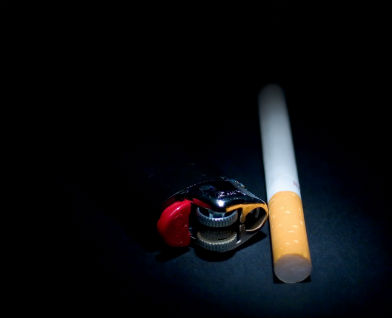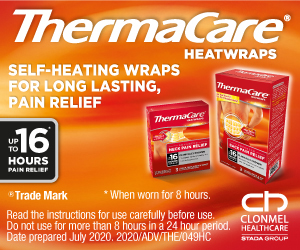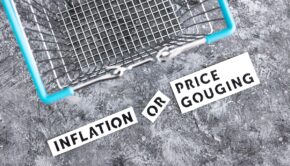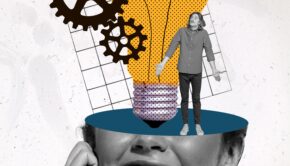Positive actions needed – not a boost to the illicit trade

It’s time the government really looked at the figures and learned from previous experiences. Legislation over the last few years hasn’t added up – smoker numbers have not significantly reduced, retailers however, continue to suffer at the expense of the unintended consequences.
15 November 2013
Over the past 10 years tobacco legislation has not extended past the direct sale of tobacco. What’s more, no research has been undertaken to determine the effectiveness of these changes in legislation. Although figures from revenue indicate a containment of illicit tobacco, studies from the Irish Tobacco Manufacturing Advisory Committee (ITMAC), Retailers Against Smuggling (RAS) and MS Intelligence have shown that the black market continues to grow with no significant drop in smoking rates. Budget 2014 introduced an additional 10 cent rise on each packet of tobacco widening the gap once again between legal and illegal cigarettes. Of course, plain packaging continues to be pushed through without rational consideration for the consequences it may have.

Retailer focused legislation
Since 2004 the layering of legislation at retailer level has continued. Ireland now has the highest price of cigarettes in the EU and one of the highest in the world. Tobacco branding is invisible in Ireland. Since 2006, the ban of packets of 10s, display advertising, regulation of vending machines and pictorial health warnings have been introduced. Ireland is supposedly at the forefront of tobacco legislation, yet according to a report by Eurobarometer in 2012, 29% of the population continue to smoke. The same figure was reported in 2006.
The government continues to enforce legislation that is not having the desired effect – a decrease in smokers. Instead, it’s having a detrimental impact on retailers as consumers continue to smoke but don’t buy from legitimate sources. Non Irish duty paid tobacco already accounts for one in four sales of tobacco. Earlier this year ITMAC reported a potential loss of €500 million and 700 job losses for the retail sector. Illicit cigarettes are a problem. It’s reached critical point.
It is important to look at previous legislation, learn from past mistakes and take positive actions from what has worked before. Minister Reilly, who has made it a priority to remove any branding, is backing up his request for plain packaging based on a study undertaken in Australia – the first and only country that has previously introduced this plain packaging law. This study is limited. The research undertaken on the possible effects of plain packs does not indicate what people will do should plain packaging come in. It only shows what people think they will do and so far there has been no noticeable reduction in smoking.
Educating teenagers
A difficulty that could arise from this legislation is Ireland’s close proximity to Northern Ireland, Great Britain and the rest of Europe. Irish consumers can easily travel to buy their favourite brands or bring them back from holidays. Additionally, if brands are removed and tobacco products are viewed primarily as a commodity, price will become the driver. A more affordable tobacco product could potentially encourage more young people to smoke.
Alternative suggestions that have been made by retailer groups include a consumer awareness campaign and increasing resources for the detection of cigarette smuggling.
One country where education has made significant improvements is Germany. Similar to Ireland, taxes were increased rapidly over a short time period. Cost increased by 35% between 2003 and 2005. Smoking instances remained the same but the non-duty paid product increased rapidly to reach 20% of the market by 2005.* An educational programme has been brought in across Germany called ‘Smoke-free Classrooms’. A report released by the German Federal Centre for Health Education (BZgA) in June of this year stated that adolescents in Germany (12 – 17) who smoke decreased from 27.5% in 2001 to 12%. Additionally there was an increase to 71.7% of adolescents that have never tried cigarettes. That’s up from 40.5% in 2001.
Border control
In Hungary, cigarette prices increased by 80% between 2000 and 2005. Smuggled tobacco decreased the legitimate market by 30% and the illegitimate market grew to 25%. The Hungarian government took significant actions to counteract smuggling including transferring customs staff to particular borders, increased training of customs officers, introduced rewards systems for officers detecting illicit product, reinforced controls along borders, developed mobile enforcement teams, modernised cigarette detector dogs and increased cooperation among sister law enforcement agencies. As a result, the illegitimate market decreased to 3.8% in 2012 from a peak of 27% in 2005 and saved taxes representing 3% of Hungarian government revenue.
Actions need to be taken from proven success stories. Actions that will have positive impacts and not just boost an illicit economy that is costing the government, the retailer and the tax payer money. Legislation that sweeps problems under the carpet is not going to work. It is essential that government introduces legislation that gets to the root of the problem and stubs it out.
*Source: The linkage between tax burden and illicit trade of excisable products: the example, tobacco. Adrian Cooper, Daniel Witt, World Customs Journal, September 2012, Vol 6, No. 2



 Print
Print






Fans 0
Followers